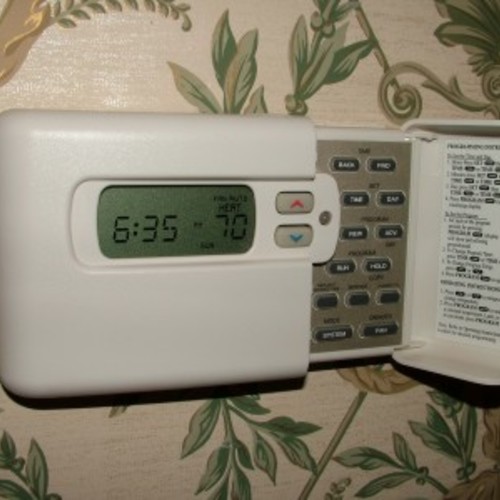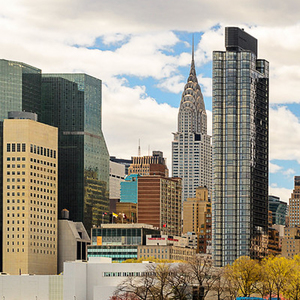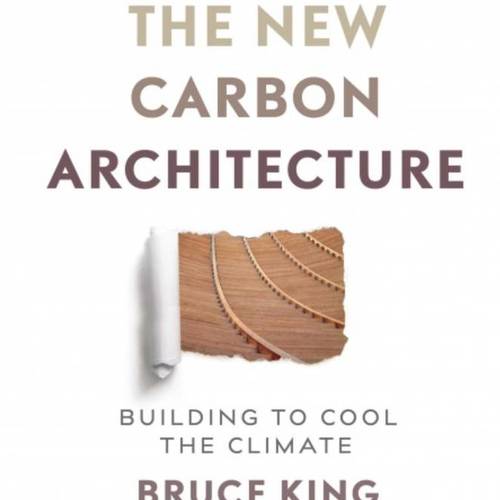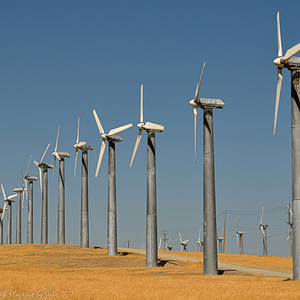
Architects participating in a global campaign to transition to carbon-neutral buildings by 2030 are making progress, but efforts so far are falling well short of current targets.
That’s the word from The American Institute of Architects, which recently posted its 2018 report on the AIA 2030 Commitment. Participants have pledged to design new buildings and major renovations to lower greenhouse gas emissions in stages. The ultimate goal is carbon neutrality—buildings will use no fossil fuels to operate—by 2030, with intermediate steps of an 80% reduction in 2020 and 90% in 2025.
For the time being, all new buildings, developments and major renovations should be designed to use 70% less greenhouse gas emitting energy than the average/median for the building type, according to Architecture 2030, which issued the challenge in 2006.
The impetus is global climate change caused by greenhouse gas emissions. The AIA says buildings consume 40% of all energy in the U.S., underscoring the importance that designers have in lowering energy use through more efficient designs.
How are they doing? For 2018, the report says, 252 firms reported data to the Design Data Exchange on projects totaling 3 billion square feet in 92 countries. The projects should reduce carbon emissions by 17.7 million metric tons and cut operating costs for buildings by more than $3.3 billion when compared with “baseline-equivalent” buildings.
The reductions in carbon dioxide emissions are the equivalent to removing 3.7 million passenger vehicles from the road for a year (the number of private and commercial vehicles registered in Georgia). It’s also the equivalent of 20.8 million acres of forest carbon sequestration, and the energy equal of powering all houses in the state of Maryland for a year.
“Nevertheless, it’s clear that we must double down on efforts to meet our 2030 targets,” the report notes. “This year’s average weighted [predicted energy use] reduction — 46% — is the best in 2030 history, but less than the current 70% target.”
In order to hit the 2030 target of carbon neutrality in buildings, efforts must “vastly increase” the number of firms that have signed on to the 2030 Commitment.
The report outlines a number of steps that would help:
- Wider adoption of energy modeling. Energy modeling is the use of software to predict energy use based on specific building components, such as insulation and windows, and climate. Modeled projects reported about 25% better energy reductions than projects that weren’t modeled. But only about half the reported projects got this extra design step, “leaving untapped a powerful tool to drive design and improve performance.”
- Use more renewable energy in design, both on-site and off-site. “Innovative design and passive strategies alone cannot bring every project to zero net carbon emissions,” the report says.
- Push for more stringent building codes.
- Encourage more firms that have signed the pact to share data about their projects because “reporting project data is the only way to show accountability and progress toward the 2030 goal.”
The report singles out 16 firms that have managed to cut energy consumption by at least 70% across their entire portfolios. They include Kaplan Thompson Architects, based in Portland, Maine, whose work has appeared a number of times at GBA.
Green Building Council also weighs in
Separately, the U.S. Green Building Council—publisher of the LEED building performance standards—issued the second volume of a report on the impact that buildings have on climate change. It concludes that many people are confused about the issue.
The path to wider appreciation of the problem is not throwing more statistics at people or issuing “dire warnings” that urge people to radically change their way of life.
“We’ve got to start engaging wider audiences to convince the public of the reality of climate-related threats,” a summary of the report reads. “We’ve got to illustrate the importance of small, everyday actions. And we’ve got to connect the dots between people and the planet they call home.”
The authors believe that a heavy reliance on data and numbers isn’t working. “Scientific language and startling statistics have their place,” the report says. “But if we are ever to reverse the dangers of climate change, we’ve got to bring more humanity into our conversations.”
That should include encouraging people to make small, gradual changes instead of radical, life-altering moves.
The first volume of the report—The Standard Issue 001—found that 40% of survey respondents say the environment is one of their biggest concerns for the future, but less than 25% say it’s one of their biggest concerns now. Issues that outranked the environment for immediate attention included health care, immigration, the economy, gun policy and political polarization (in that order).
“Saving the planet is too overwhelming, too abstract, and too distant from peoples’ realities,” the report says.
The second volume suggests ways that people can, in the report’s words, turns anxiety about the environment into action. It’s especially aimed at people who believe that environmental problems exist but aren’t actively engaged in fixing them.
“We need a revolution in the near term, but it must start by growing gradually in order to bring everyone along and have maximum impact,” the report says. “This means taking baby steps today, even though we know we will need to make big steps in the future.”
It also notes that the buildings where people live and work have a big impact on health, but even among the strongest environmental advocates the connection between “living green” and “green buildings” is not understood. Most people think of green buildings in terms of how much energy they use, the report says, adding, “We know that green buildings are so much more.”
-Scott Gibson is a contributing writer at Green Building Advisor and Fine Homebuilding magazine.
Weekly Newsletter
Get building science and energy efficiency advice, plus special offers, in your inbox.















8 Comments
Yet another case where "energy use" and "carbon" are incorrectly used as if they are interchangeable. Replacing cellulose with the same thickness of XPS will (almost always) save energy - but will *increase* CO2e. Energy modeling will get this wrong. AFAIK, all building codes do too.
When are we going to see "BCopt" replace "BEopt"?
What, embodied energy and embodied carbon emissions matter? :-)
Even LEED gives (or at least used to give) extra credit for concrete used inside the thermal envelope of the building on some theory of thermal mass benefit for reducing energy use, apparently ignoring the large carbon footprint concrete carries.
High-R ICF walls with 3lb spray polyurethane foam roofing, anyone?
Dana,
Do any of the energy models take into account a wood frame house and the embodied energy to build a home, then have it destroyed, then another home must be built in its place? A wood frame structure that must be rebuilt after a wildfire, tornado or tornado vs a home that is originally built (concrete walls) to withstand such an event?
In 2018 over 30,000 homes were destroyed by wildfire. (per the latest stats online). Didn't lookup hurricanes or tornado's but I would safely assume that would be another few thousand homes.
30,000 homes would represent about 3% of annual new housing starts US in recent years, and less than 0.05% (5 hundredths of a percent) of ALL homes in the US.
In 2018 there were about 1,300,000 new homes completed in the US, so 30K houses would be about 2.3% of that total:
https://www.census.gov/construction/nrc/pdf/newresconst.pdf
There are currently over 130 million housing units in the US (single family + units in multi-family buildings.), of which 30K houses would represent 0.023%. So even if the total numbers destroyed were double that 30K number it would be under 0.05%.
So I'm not sure what the point really is- yes, houses get destroyed by fire & floods, or otherwise fall into disrepair and have to be replaced.
But no, I don't believe the gets factored in to anyone's energy use models. The embodied energy does get factored into most lifecycle modeling though.
The average single family home in the US has on the order of a 50 year lifecycle (which is terrible, a lot of smaller and lower-end housing developments get bulldozed for McMansion replacements well before their time), though many are built to last for a century or more, and with reasonable maintenance can last that long. My current stick-built house is 96 years old and in pretty good shape. My biz-partner's stick built home is about 180 years old, also in good shape. But if the average is 50 years, it means a 2% per year replacement rate just to break even on total housing units.
The embodied energy/embodied carbon adds up, but you can burn down or blow away a number of stick built cellulose insulated homes and still not have it add up to the embodied energy or carbon footprint of one EPS insulated ICF house with a 3lb polyurethane roof.
The amount of EPS under the slabs of many Passive Houses is of pretty dubious verditude too, especially as energy sources green-up, lowering the full lifecycle environmental impact of the house's energy use.
If only architects were actually responsible for the outcome of the building, the 2030 challenge may actually matter. In reality, occupancy rates and first construction cost drive the design. Occupancy rates increase when you have an entire wall of glass (even though the blinds are down once the building is occupied). In my town, building developers often sell the building right after it is built, so they could care less how it performs. For that matter, federal tax write offs on interest almost garuntee that commercial building ownership will change every 8-10 years meaning that there is no financial incentive to create a high performance building with energy efficiency measures (EEMs) with a payback longer than that time frame.
Carbon taxes might help change the economics of EEMs, but longer ownership also needs to be incentivized to really change the game.
There are millions of buildings in towns and cities ( and more recently suburban malls) sitting vacant for years because no one wants to live there or the costs of renovating them (including lead and asbestos removal) are too high. And many of these areas have existing transportation infrastructure so new roads, water and sewer and power don’t need to be built. Perhaps that is where government incentives should go to encourage people to consider these places instead of new surburban development.
As stated previously, without controls (e.g., more stringent building codes) or options for some kind of reward system (financial, psychological, etc.), the architectural community won’t be affecting environmental change. As a former designer, I’ve found that people often assume architects have far more power than they do. Which isn’t to say they don’t have a responsibility to act, which is also the case. Unfortunately, however, there’s little incentive for clients to add cost and reduce space, and virtually none (other than a moral imperative) for architects to change their clients’ minds.
My city (Columbus, OH) is filled with upscale multifamily buildings sprouting like mushrooms, and I’ll bet none of them was designed with efficiencies beyond the minimum requirements. There’s the usual green-washing, such as installing carpeting that can later be recycled. But nothing about siting to take advantage of sun angles, additional insulation, blower door testing, solar or other considerations. More power to firms that are successfully pushing for significant energy conscious features. But in a profession that still builds roughly the same way it did a hundred years ago (concrete, brick, wood stud, etc.), nobody should be surprised that changes will be glacial without some kind of outside force.
> controls (e.g., more stringent building codes) or options for some kind of reward system
IMO, the most obvious solution is environmental damage charges/taxes.
Log in or create an account to post a comment.
Sign up Log in